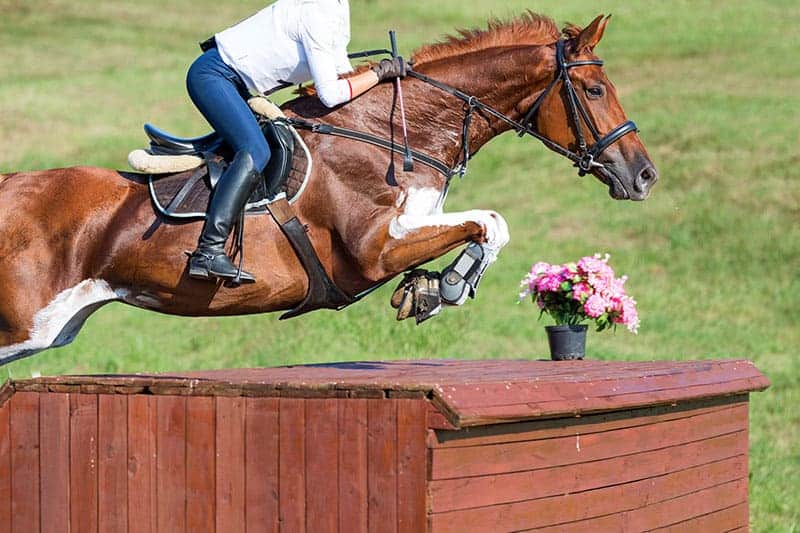Artificial intelligence technology might be able to assist veterinarians in making recommendations to riders about their horse’s performance.

Like many performance horses, those that compete in eventing have strenuous training and competition schedules. These horses often work harder than normal in the competition environment, which, coupled with the potential stressors of this setting, can cause changes in their heart rate, body temperature, lactatemia (the normal presence of lactate in the blood), and creatine kinase (an enzyme that mainly exists in muscle cells).
After the cross-country phase in eventing, the horses competing are required to jog in front of the show officials to confirm soundness for the final phase, show jumping. Some horses present with gait changes that might affect their performance in the show jumping phase, said Lauren Johns, an undergraduate researcher in the Brooks Equine Genetics lab at the University of Florida, in Gainesville, during her presentation at the Equine Science Society’s Symposium, held June 6-9 in Grapevine, Texas. “We wanted to determine if gait changes detected by artificial intelligence (AI) technology after the cross-country phase would have a direct correlation with the horse’s performance in show jumping.”
The researchers collected high-speed videos of 194 horses during the jog at five international events in Kentucky and Florida at the 3-, 4-, and 5-star levels. Using software that applies AI technology, they added labels for 26 physiological landmarks to the videos and measured gait parameters indicating soundness and quality as each horse trotted down the jog track.
Some of the gait parameters Johns and the Brooks Lab team used included:
- Duty factor.
- Speed.
- Stride length.
- Fore- and hind-limb extension.
“The horses with faults (refusal or knocked rail) during the show jumping phase spent more time in the stance phase of the trot, with their feet on the ground, during that morning’s jog,” said Johns. “Horses with faults also had decreased hind-limb extension.”
Athletic ability and conditioning often vary between horses; therefore, AI technology is not meant to replace veterinarians during inspections but, rather, enhance their ability to observe the horse beyond what the human eye can detect, stressed Johns, and provide riders with more information about their horses.
“These results are also not a direct detection of fatigue or minor lameness,” she said. “Also, it is nearly impossible to account for other random variables like rider error on course.”
Overall, horses that presented with greater gait changes in the jog following cross-country were more likely to have show jumping faults later that day. Understanding what is changing the way these horses go and what it can teach us about their soundness, fitness, and training might help us improve performance and prevent injuries in our event horses. In the future, real-time technologies like cell phone apps that can measure these gait parameters might be useful for riders, trainers, and veterinary professionals by allowing them to make the best possible decisions regarding their horses’ care.
Posted by Haylie Kerstetter | Jul 28, 2023 |
Source : https://thehorse.com/1127927/using-ai-to-assess-gait-changes-in-event-horses/?lid=18qevmin23nf







